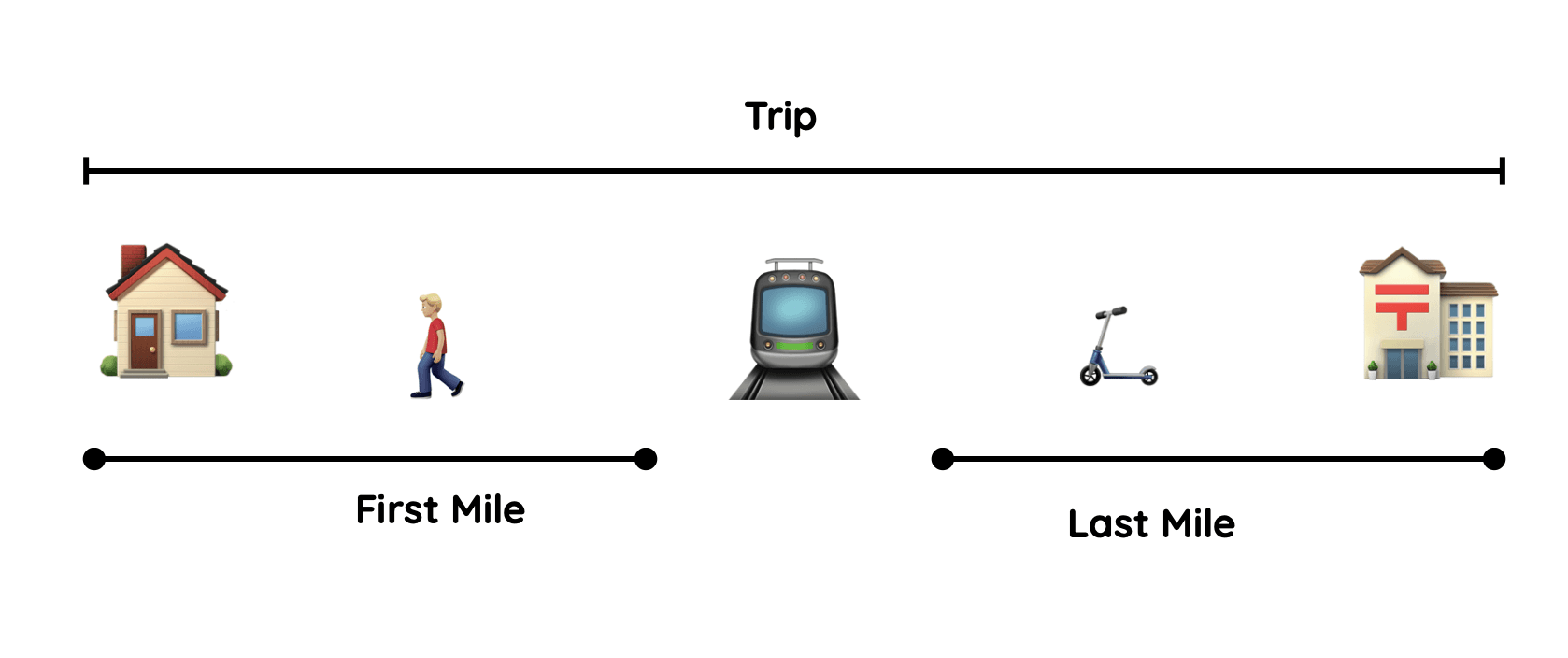What is a Solution Statement? 🤷🏼
Your solution statement should directly explain what opportunities there are to solve the problem that you stated in your problem statement. It's the "how" to your "why" and the time to communicate your brilliant idea. Your problem statement should set the stage for your solution to shine.
Let's look at a successful startup, Lime, who found a great solution to an existing problem. Lime is an e-scooter and bike-sharing startup that, since its launch in 2017, has rapidly grown into one of the world's biggest e-scooter and bike-sharing networks since its launch. In their pitch, the founders said they were poised to change urban transportation as we know it by solving the last-mile problem.
The Last-Mile Problem 🚶
When people consider the nearest bus or train station is too far to walk and too close to drive, adding other factors such as weather (too hot/cold), terrain (hills), and time, they end up just driving straight to their work, university, shops, etc. Lime managed to make that 'last mile' a lot more accessible and manageable for commuters while reducing the number of cars and pollution. They had a straightforward solution to an apparent problem.

The E-Scooter Solution Statement 🛴
When defining the solution in your business plan, it needs to be kept short, simple, engaging, to the point, and easy to understand. Steer clear of complicated technical terms. Rule of thumb? Even your grandma should get it. In the case of Lime, their solution statement would have sounded a little like this:
"People need access to an alternative transport option that provides an easy, convenient, fast and sustainable way to get to main transport links without the need to drive or walk."
The Netflix Example 🍿
In another example, we used the case of Netflix in our problem statement article, where we explained how painfully inconvenient going to a video store is. We want the solution statement to connect directly to that problem:
Problem: "Going to the video store requires fighting traffic, wandering the aisles, and waiting in long lines just to get a single movie."Solution: "Netflix allows anyone to enjoy thousands of titles streamed directly to their home or delivered to their mailbox." (Yep, mail-order movies was where Netflix started before streaming was a thing).
The Ed-Tech Startup Example 🧑🔬
Meet Labster - a learning platform for virtual labs and science simulations. They use virtual reality and immersive simulations paired with game-based learning to make the science lab much more engaging. All the student needs is a computer and an internet connection. Pretty cool! This is how they would have connected their solution statement to the problem:
Problem: "Students are finding science experiments boring and have difficulty staying engaged and arriving prepared for lab work."
Solution: "To transform the way science is taught by making immersive digital experiences with engaging storylines and project-based learning."
How Do You Frame The Solution For Your Startup? 🖼
Defining your solution can take time. For some, it might not come as naturally or easily as they had first imagined. But don't fret. It will come at a good time if you understand how to frame it properly. How you do this early in the idea stage can be the difference between success and failure later on. Success is clearly what everyone aims for, so what steps should you take to frame your solution successfully? You need to be able to answer the following questions:
- What is your solution offering?
- Are you actually solving the problem?
- Does the solution create a viable business model?
- Is your solution different or unique from your competitors?
These questions serve as a checklist for yourself to verify whether your solution is appropriate ✅
Remember that you want to keep people engaged. Don't exhaust them with long explanations on how your solution works, how you will develop it, and what it will cost; you will have plenty of time for that later. Now that you have successfully defined your solution, you are ready to move on to your Unique Value Proposition.
